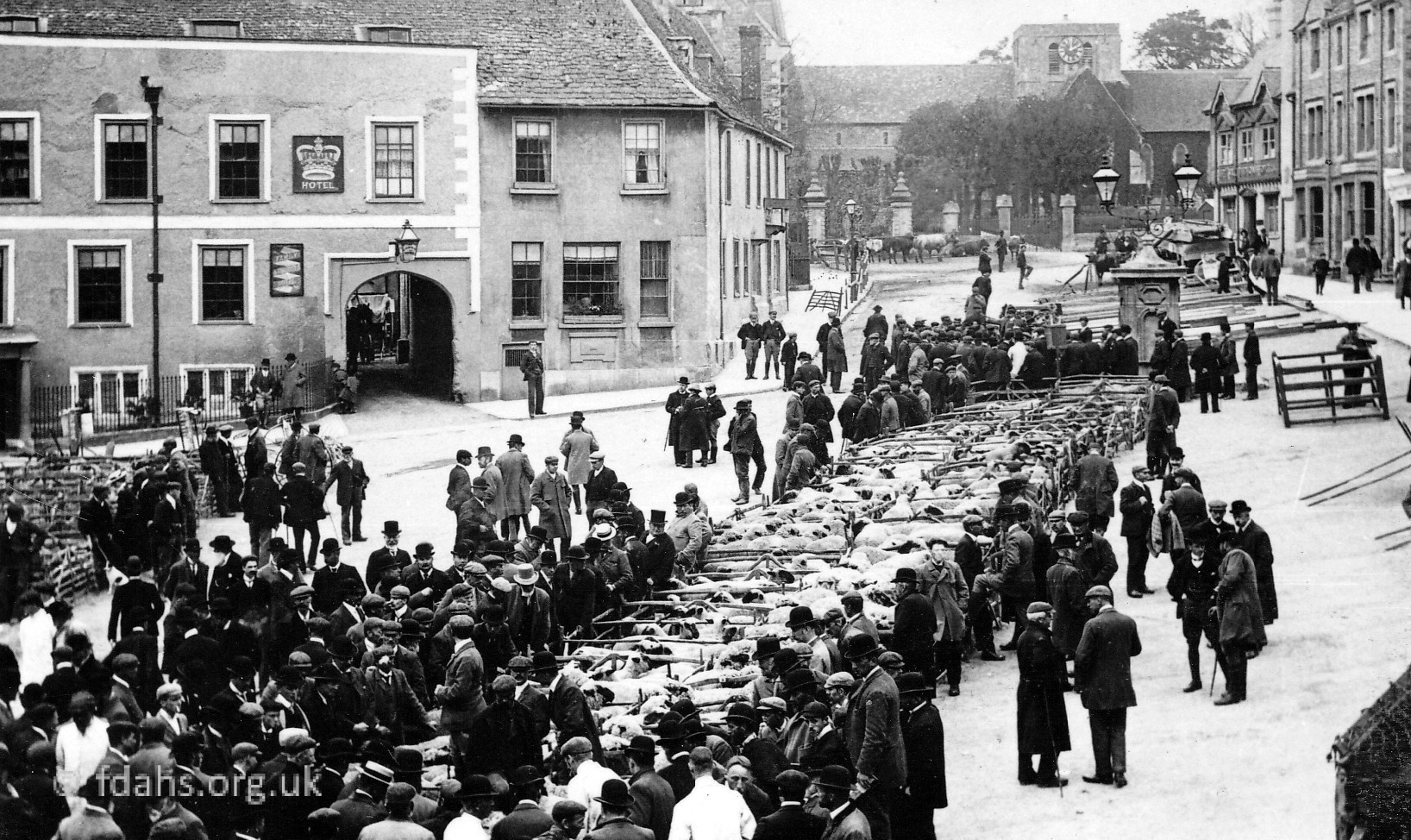The Market Hall or Town Hall was built in the 17th century by public subscription in the Market Place on land owned by the Lord of the Manor. The stone pillars support a framework of massive oak beams carrying a timber framed structure covered in lathes and a plaster stucco facing. At one time there was a room under the roof, as well as the main meeting room. Old pictures show a dormer window looking towards the saddlers. It was a hive of activity on market days when farmers’ wives would sell their surplus eggs, butter and cheeses under the shelter of the meeting room above. From at least 1854 to 1863 Trade Directories describe the upper floor as being used as a subscription room for people to meet in. In 1883 the Directory states that this room was disused.

The first town jail was a tiny room in one corner with a very small, high window and a peep hole in the door known as the Blind House. The prisoners inside would await the coming of the magistrates and would attend the Court House, which was in the Crown Hotel, to have their case heard. Friends would pass food and tobacco through the bars on the door. In order to give them some beer a long clay pipe would be inserted into the drink and the stem passed through to the prisoner who had to stand on the indie lock of the door to be able to reach it. Just outside this jail were the stocks in which the wrongdoers were placed and who were sometimes the recipients of missiles thrown by the general public. Later, a larger brick lock-up was built adjoining the Hall to the west, this in turn went out of use in the 1880’s when a proper Police Station was built on the eastern edge of town in Swan Lane and which held two single cells. The lock-up was then taken over as a store for the barrow, brush and shovel of the town road sweeper.
The town’s fire fighting appliance, the parish pump as it was called, had been housed in Church Street but by 1911 it was under the Market Hall with Captain Haworth as superintendent and 12 men.


1910’s. The Market Hall being used by the firemen but not yet outfitted with the ladder, net or bell.
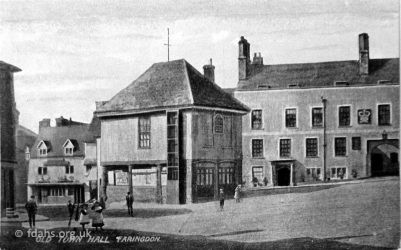
1910’s. The Market Hall being used by the firemen. Note the ladder for their practice.

c1910’s. View of the Market Hall from the Corn Market. Notice the firemen’s bell on the roof and that the dormer window has disappeared.
Finally a net was added for the firemen to practice getting down from a burning building.
The town ambulance was also garaged here for a time, after the Cottage Hospital was opened in the 1890’s. The ambulance was the Church bier, not very encouraging to be taken to hospital on the same set of wheels that was used to take bodies from the hospital morgue to the church and the graveside!

c1913. Notice the ladder, the net and the bell on top of the roof. The ambulance doors are on the right.
Ann’s Garage is visible to the left of the Town Hall. This was taken over by Busby, newsagents, and has changed ownership four times since. On the left, at the junction with Southampton Street, is Pocock, tailor, which later became part of Barclay’s Bank. The bell hanging outside the Bell Hotel can just be seen on the left of the picture above the gas lamps, which are hanging outside Smith’s draper shop.

c1913. Looking from the Port Well towards the Corn Market. The picture shows the ambulance station and the bell on the roof which gave warning to the volunteer firemen.
Lord Berners inherited his title and baronetcy on the death of his uncle Sir Raymond, fourth baronet, in 1918. When he purchased Faringdon House and estate in 1919, he became Lord of the Manor. The Market Hall at that time, with most of the Market Place, went with the Manorial rights. However, Lord Berners declined to buy the Hall as it needed a lot of repairs, so he gave the building to the town as a home for the war memorial to the fallen of the First World War.
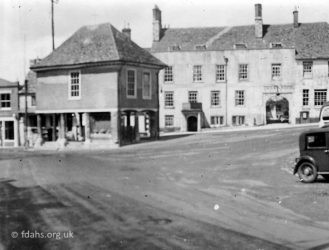

1920’s. The Market Hall showing the new War Memorial. The firemen’s ladder has gone. The bell on the roof has been removed.
During the Second World War officers were billeted in the meeting room and they only had a small tortoise stove for heating; it was said that more heat came off the chimney than the stove.
A George III framed coat of arms was fixed between the two eastern windows until the Hall was given to the town and then it disappeared.

1920’s. The Market Hall with the coat of arms having disappeared.

1970’s. The Market Hall. Must be on a Sunday as there is no traffic about.
By the 1980’s the Market Hall was in rather a bad state of repair. The upstairs was being used by a charity to sell their goods.
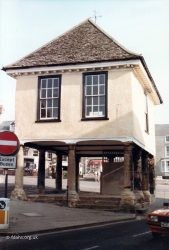


1984. Notice the crumbling state of the pillars on the side facing north. The pillars on the other side are not in such a bad state of disrepair. The enclosed bit underneath is where the stairs were to gain access to the room above. The Town Council decided that the building needed extensive repairs.


1984. Repairs underway. At one time the upper room was used as a subscription reading room and after the repairs were done it was occupied by the town library. At this time there was no lift to take people up to this floor. So by 1986 the library had moved to its present location in The Elms in Gloucester Street and the Red Cross charity shop took it over.
Further renovations took place in the late 1990’s.

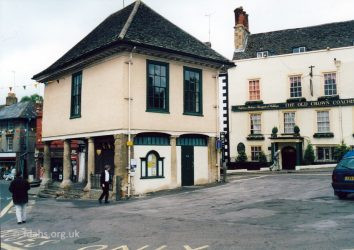
1990’s. Showing the improvements to the facilities and entrance on the Market Place side. These included a toilet, a lift and a proper entrance to the upstairs.


1990’s. The pillars look much better and the western side, looking from ‘The Narrows’ was still available for people to use as a bus waiting area, an area to sit in or to sell various items on special occasions.
2000. More refurbishment inside – a new staircase has been added and the upper room converted for exhibitions and meetings, with a small kitchen area.
Slightly adapted and updated from research by Rosemary Church © 2017
F.D.A.H.S. ARCHIVE
BUI 1175 BOX BUI 1164
